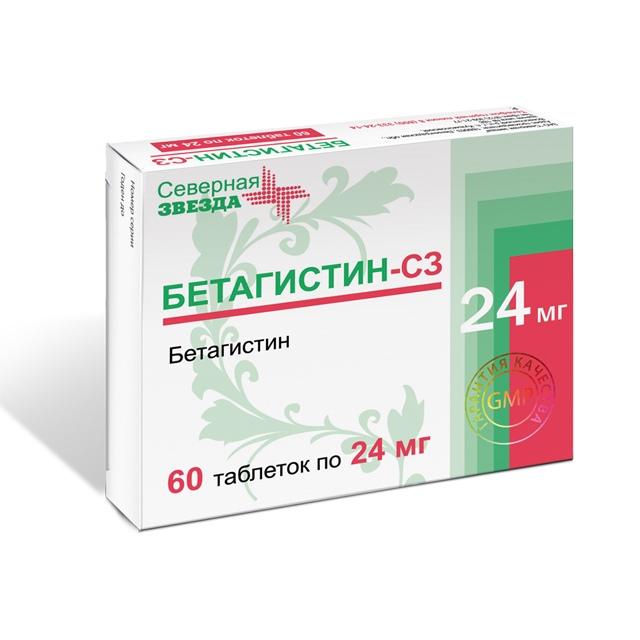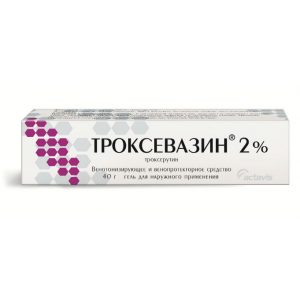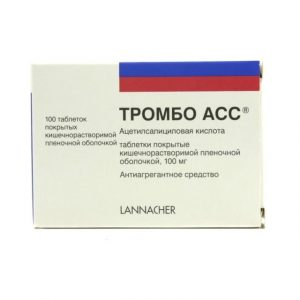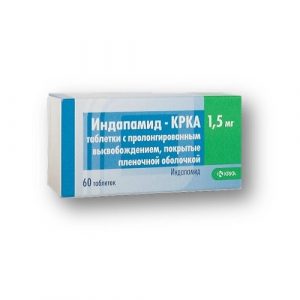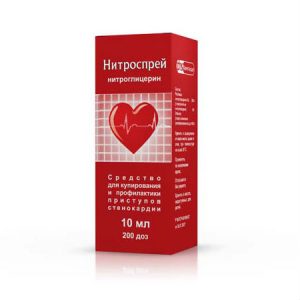Description
Release form
Tablets
packaging
60pcs
Pharmacological action
Betagistin acts mainly on histamine H1- and H3 receptors of the inner ear and vestibular nuclei of the central nervous system. By direct agonistic action on the H1 receptors of the vessels of the inner ear, as well as indirectly through the action on the H3 receptors, it improves microcirculation and capillary permeability, normalizes the pressure of the endolymph in the labyrinth and cochlea. However, betahistine increases blood flow in the basilar artery.
It has a pronounced central effect, being an inhibitor of the H3 receptors of the vestibular nerve nuclei. It improves the conductivity in the neurons of the vestibular nuclei at the level of the brain stem.
The clinical manifestation of these properties is a decrease in the frequency and intensity of dizziness, a decrease in tinnitus, and an improvement in hearing if it is reduced.
Indications
Treatment and prevention of vestibular dizziness of various origin syndromes, including dizziness and headache, tinnitus, progressive hearing loss, nausea and vomiting, or Meniere’s syndrome.
Contraindications
Hypersensitivity to any of the components of the drug
children under 18 years of age (due to lack of data)
pregnancy and lactation (due to lack of data).
Precautions:
Peptic ulcer of the stomach or duodenum (including history), pheochromocytoma, bronchial asthma.
These patients should be regularly observed during treatment.
Use during pregnancy and lactation
Insufficient data to evaluate the effects of the drug during pregnancy and lactation. In this regard, it is not recommended to take during pregnancy. At the time of treatment, it is necessary to stop breastfeeding.
Special instructions
Influence on the ability to drive a car and other mechanisms.
Betahistin does not have a sedative effect and does not affect the ability to drive a car or engage in activities that require the speed of psychomotor reactions.
Composition
1 tablet contains:
active substance: betahistine dihydrochloride 24 mg
excipients: microcrystalline cellulose 229.5 mg lactose (milk sugar) 71.25 mg citric acid 7.5 mg silicon dioxide colloidal dioxide (aerosil) 17.4 mg talc 5.25 mg magnesium stearate 3.6 mg sodium lauryl sulfate 7.5 mg starch 1500 (pregelatinized starch) 9.0 mg.
Dosage and Administration
Inside, with meals.
24 mg tablet: 1 tablet 2 times a day.
Improvement is usually noted already at the beginning of therapy, a stable therapeutic effect occurs after two weeks of treatment and may increase within a few months of treatment. The treatment is long. The duration of the drug is selected individually.
Side effects
Gastrointestinal disturbances, the appearance of hypersensitivity reactions from the skin (rash, itching, urticaria), Quincke edema.
Drug Interactions
Cases of interaction or incompatibility with other drugs are unknown.
Overdose
Symptoms: nausea, vomiting, convulsions.
Treatment: gastric lavage, activated carbon intake, symptomatic therapy.
Storage conditions
In a dry, dark place at a temperature not exceeding 25 ° C
Keep out of the reach and sight of children.
Shelf life
5 years.
Deystvuyushtee substance
Betagistin
dosage form
tablets
Prescription
Prescription
For adults as prescribed by a doctor
